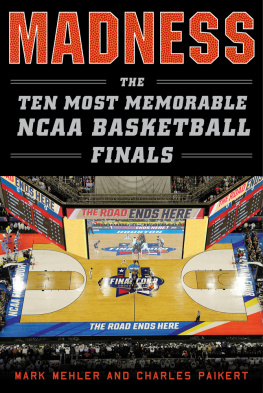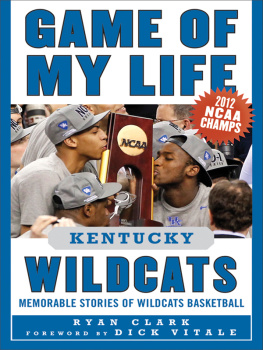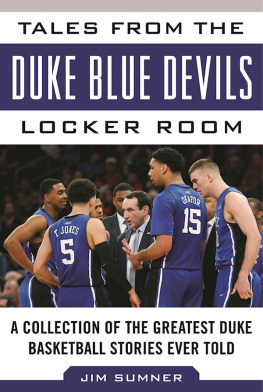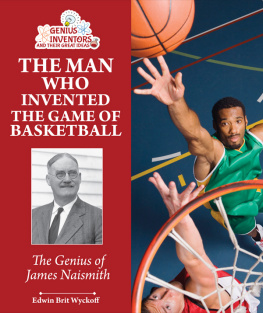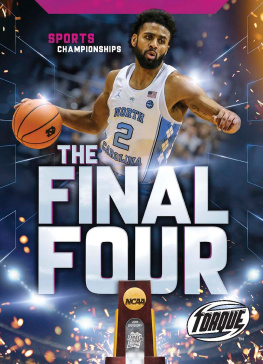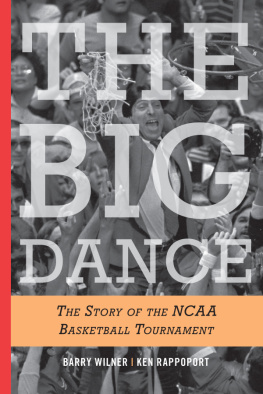Copyright 2018 by Mark Mehler and Charles Paikert
All rights reserved. No part of this book may be reproduced in any manner without the express written consent of the publisher, except in the case of brief excerpts in critical reviews or articles. All inquiries should be addressed to Sports Publishing, 307 West 36th Street, 11th Floor, New York, NY 10018.
Sports Publishing books may be purchased in bulk at special discounts for sales promotion, corporate gifts, fund-raising, or educational purposes. Special editions can also be created to specifications. For details, contact the Special Sales Department, Sports Publishing, 307 West 36th Street, 11th Floor, New York, NY 10018 or .
Sports Publishing is a registered trademark of Skyhorse Publishing, Inc., a Delaware corporation.
Visit our website at www.sportspubbooks.com.
10 9 8 7 6 5 4 3 2 1
Library of Congress Cataloging-in-Publication Data is available on file.
Cover design by Tom Lau
Cover photo credit: AP Images
All interior photos courtesy of AP Images
ISBN: 978-1-61321-993-5
Ebook ISBN: 978-1-61321-994-2
Printed in the United States of America
CONTENTS
Acknowledgments
I would like to thank the following:
My friend and coauthor, Charlie Paikert, who came up with the idea for this book. Charlies all Orange (Syracuse), and Im all Red (St. Johns), but we make it work.
Our editor, Ken Samelson, for his encouragement and support throughout the editorial process.
My friend, Greg Prince, for making this book possible by introducing us to Ken. Greg also reintroduced me to the New York Mets, for which I am less inclined to thank him.
My junior high school friend, Michael Klahr, for getting me hooked on St. Johns University basketball (and college basketball in general) fifty-four years ago.
My late friend, Bill Brookman, another college basketball fanatic, who taught me how one can ride the bench and still be the coolest guy on the team.
My father, Irving Mehler, who throughout my professional life urged me to write about the things I love.
And, finally, my wife, Phyllis, who could care less about college basketball or any other sport but who is the best sport Ive ever known.
Mark Mehler
Thanks to my coauthor Mark Mehler for shouldering a heavy load; my wife, Bernice Napach, for her patience and encouragement; my friend, M. C. Antil, for timely assists, and my daughter, Anna Paikert, for being a fan. And in memory of my father, Gza Paikert, who shared his love of college basketball with me on cold winter nights in Syracuse.
Charles Paikert
Introduction
Why We Care
If you make every game a life and death proposition, youre going to have problems. For one thing, youll be dead a lot.
Dean Smith, former head basketball coach of the North Carolina University Tar Heels
S ports Psychology 101:
We watch sports and root for our favorite teams out of our fundamental human desire to connect with one another and with something bigger than ourselves. As the institutional pillars of society that once served that functiongovernments, churches, schoolscrumble and fall (dont take our word, watch The Simpsons ), we gravitate to the one remaining institution that never fails to remind us that we are one.
For many of us, the act of rooting follows a progression that looks something like this: strong interest, turning into mild obsession, then into the homicidal Robert DeNiro character in The Fan , and, ultimately, to a Duke University Cameron Crazy, the apogee of rooting fanaticism.
Among all the viewing options in the vast universe of televised sports that inspire fan devotion of this magnitude, the NCAA Final Four holds a unique and indelible place. The American college football championship entails a mere four-team playoff; the NFL, a twelve-team roundelay leading to Super Bowl Sunday. Paltry stuff, indeed. The two-week countdown to the Final Four, by contrast, is a basketball smorgasbord, a veritable hardcourt feast, offering a delectable array of sixty-four games (the tournament field as of this writing comprises sixty-eight teams and growing). These games are contested in nearly every nook and cranny of the American landscape.
And with all these tournament games come the kind of wild and crazy goings-on that are found in no other team sport. They do not call it March Madness for nothing. You wont witness Princeton besting UCLA on the gridiron, but back in March of 1996, the mighty Bruins, coming off their eleventh national championship season, were thoroughly upended, if not humiliated, by a group of skinny Ivy Leaguers from New Jersey.
Siena over Stanford, Bucknell over Kansas, little Hampton University over Iowa State, Middle Tennessee over Michigan State, and most impressive of all, George Mason over North Carolina, Michigan State, and UConnin one fortnight, no less. These nearly impossible to comprehend, monumental upsets are among the hundreds of sporting miracles that have defined the early rounds of the championship for years. If you truly wish to celebrate the magic and the mania of big-time sports, the NCAA basketball tournament is the place to park your keister every March.
But March Madness is about more than the games themselves. Theres bracketology, the ever-popular pseudo-science of selecting the sixty-eight teams, matching them up against each other in four regional brackets, and picking the winners of each game. Anyone can play bracketologythe math whizzes who gave us the algorithms that crashed the global economy back in 08 seem to perform particularly well at this pursuit. Likewise, everyone can share in the annual Selection Sunday ritual of complaining about the qualified bubble teams that should have made the cut. And, of course, there are the office betting pools, the beer bashes, the alumni pissing contests, and the over-the-top media hype that would lead one to believe that each NCAA tournament is the most important event of its century.
I dont believe Im a better coach now than I was two and a half hours ago.
Dean Smith, in the minutes after winning his first NCAA championship in 1982
Leave it to the late, great coach Dean Smith to inject a little homespun common sense and wisdom into all this mayhem.
The NCAA tournament, suffice it to say, was not always a round-the-clock whirligig of must-see TV. Its humble roots go back to 1939, when, as the new kid on the block, it vied for supremacy with the more prestigious National Invitation Tournament (NIT) held at Madison Square Garden in New York. In its first decade, the NCAA played a very distant second fiddle to the well-established NIT. All that began to change in 1951 when City College of New York (winner of both the NIT and NCAA) became embroiled in a point-shaving scandal that severely tarnished the image of the Big Apple and, by extension, its Broadway baby, the NIT. New York, to be sure, remains a basketball mecca, but worshippers of the game are more likely to encounter transcendence on the rough and tumble playground courts of the Bronx and Brooklyn than they are in midtown Manhattan.
The NCAAs, originally an eight-team tournament, expanded to sixteen by the early 1950s, grew to between twenty-two and twenty-five teams from the mid-1950s to early 1970s, thirty-two in 1975, forty in 1979, forty-eight in 1980, and sixty-four in 1985. The field was further expanded to sixty-eight in 2011.
The accomplishment of gaining selection into a widely expanded NCAA field has surely been devalued to a degree. On the other hand, as compared to college football, where losing teams participate in an absurdly bloated bowl system, the NCAA tourney can appear as exclusive as a Palm Beach golf club. And with its expanded roster, the ultimate goal of winning the whole shebang now requires a grueling six-game slog. Win and advance. Lose and go home. Its no easy ride to college basketballs summit.

